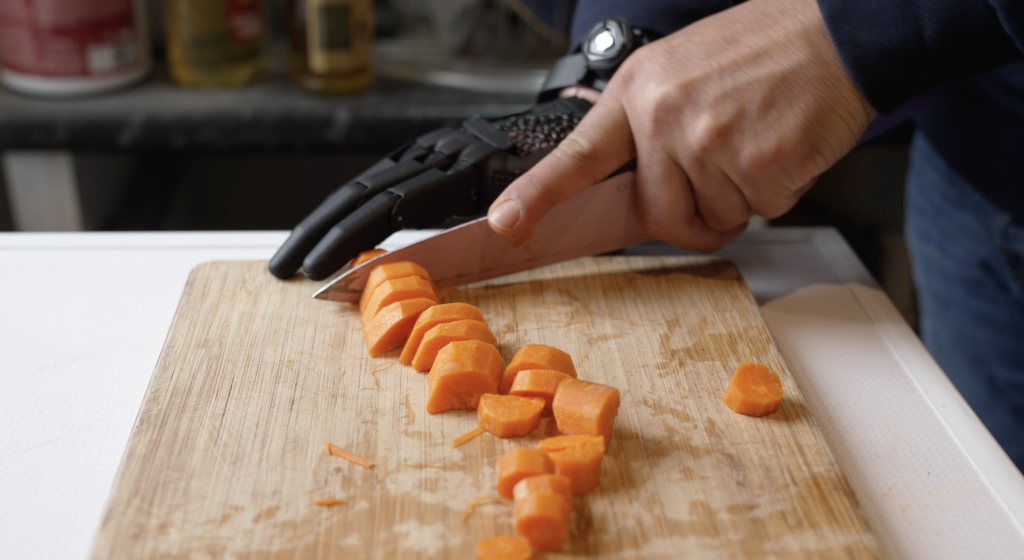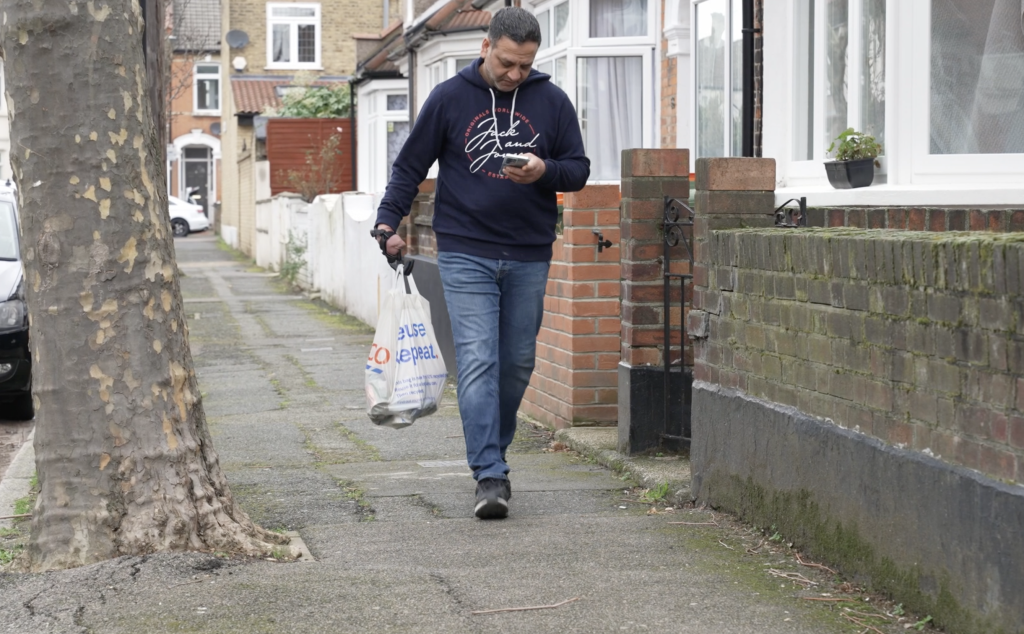UK-based robotics company Open Bionics has announced that its 3D printed finger device has been adopted for the first time by a hand amputee from London.
The new 3D printed prosthesis, called the Hero Gauntlet, was made for 50-year-old Londoner Suleman Chohan using Open Bionics’ 3D scanning and additive manufacturing technology.
The Gauntlet is customized to individual user needs, and enables people with congenital and acquired partial hand limb differences to regain hand functionality. Finger movement on the Hero Gauntlet can be easily controlled by wrist flexing actions.
Chohan, whose hand was partially amputated 30 years ago following an industrial accident, explained that previous prosthesis failed to enable the functionality of real fingers. “When I had my amputation, there wasn’t much around. My NHS center gave me a dummy latex hand that didn’t have any function. It was really heavy, so I didn’t really use it,” stated Chohan.
Since receiving his 3D printed Hero Gauntlet, Chohan has regained the ability to perform a range of two-handed activities. These include using his phone, mountain biking, food preparation, shopping, and VR gaming.
A pool of people, including Chohan, have been testing the 3D printed device for over a year, with the Open Bionics team assessing how certain features perform in everyday life.
People with a partial hand amputation can now sign up to the Hero Gauntlet waiting list on the Open Bionics website, with the full commercial launch of the final product said to be “coming soon.”

Regaining hand functionality with 3D printed fingers
Development of the Hero Gauntlet began last year, with the prosthesis being co-designed and tested by a number of partial hand amputees. Through this collaboration, Open Bionics has been working to enhance the level of hand movement and functionality available for users.
“We designed the product in collaboration with users via lab testing, weekly diaries, and clinic visits,” explained Hellie Mutter, a mechanical engineer at Open Bionics. “We were really excited to see how intuitive our users found the active operation mechanism, which meant that even the early prototype versions were able to open up new experiences for our users.”
Mutter added that “It’s been especially great to hear how the look of the device has given some of our test users a confidence boost regarding their limb difference.” One such user to receive a confidence boost from their functional 3D printed fingers is Chohan, who can now complete a number of essential every day activities.
Manufacturing on Demand
“Before I could only hold shopping bags in my left hand. So I was limited to what I could carry. But now when I’m out and about, I can carry two or three bags,” stated Chohan. “When I lock the digits, I’ve got my finger fixed there, I can swipe on my phone and type text messages. Whereas before, without the prosthetic, I ended up smashing my phone so many times.”
The 3D printed hand prosthesis has also allowed Chohan to rediscover his love for VR gaming, enabling him to fully utilize two controllers simultaneously.
“I love VR gaming. The trouble is, I couldn’t hold both controllers. It really frustrated me, up to a point where I sellotaped the controller to my amputation, which was weird and didn’t really work anyway,” Chihan said. “But now, I can enjoy the full VR experience, and it just feels so great to be able to hold both controllers,” commented Suleman.”
The Hero Gauntlet adds to Open Bionics’ growing portfolio of 3D printed prostheses. Back in 2017, the company participated in the world’s first clinical trial of 3D printed bionic hands. Two years later, the company raised $5.9 million in Series A funding to expand the international distribution of its products, which include its flagship Open Bionics Hero Arm.

3D printing optimizes prosthesis development
The use of 3D printing is growing in the development and production of prosthetic devices.
In 2022, US-based prosthesis manufacturer Psyonic developed a 3D printed Bionic Hand using Formlabs’ Form 3 stereolithography (SLA) 3D printer. The development process included rapid prototyping, followed by changing iteration and the production of parts cheaply and at low volumes. The Ability Hand weighs just 490 grams, with the thumb rotating electrically and manually, and all five fingers able to flex.
During production, 3D printing was used in conjunction with other traditional manufacturing techniques, driving down costs. “There’s no way we could have competed with other prosthetics companies at our size if we had to abide by purely traditional manufacturing,” stated Psyonic Lead Mechanical Engineer James Austin.
Elsewhere, 3D printed prosthetic manufacturer Protosthetics launched the first ever full-service, in-house 3D printing program for orthotics and prosthetics (O&P) practices. The plug-and-play system is called Galileo, and is designed to help O&P developers overcome barriers that have deterred them from adopting additive manufacturing.
The company claims that the Galileo program can enable clinics to make 80%v savings on each 3D printed prosthesis, realizing shorter turnaround times in the process.
You might also like:
New Carcinotech funding to expand tumor 3D printing commercialization: This is the first equity deal from the £150 million IFS, conducted through appointed fund managers Maven Capital Partners on behalf of the British Business Bank.
* This article is reprinted from 3D Printing Industry. If you are involved in infringement, please contact us to delete it.
Author: Alex Tyrer-Jones

Leave A Comment